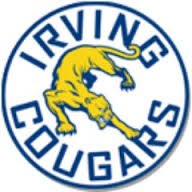The Future Past
Thank goodness our children give us a second chance to live through high school once we actually understand all those weighty themes in the books we had to read in freshman English. The Great Gatsby, Lord of the Flies, Catcher in the Rye – it’s too bad all that perspective on human frailty, base instincts and society-imposed despair doesn’t make as much sense when you feel immortal with nothing but possibility in your sights.
Fitzgerald had it right: “Everybody’s youth is a dream, a form of chemical madness.” Truth be told, I had a relatively idyllic high school experience. I went to Interlochen Arts Academy, an arts boarding school in upper Michigan. At least in my day, everyone just gave each other space to figure stuff out. We were all a little different, so it was like one big, glass house where few stones were thrown. I felt like I had the freedom to be whatever I happened to be at the time – driven, moody, introspective, euphoric, tortured – the whole teen spectrum. My senior picture says it all.
Middle school was my gauntlet. I attended Irving Middle School in Norman, Oklahoma, where cheerleaders ruled the roost, sports were the almighty cause and a fair number of bullies operated their territories, largely unchecked. I was nerdy, focused, practiced piano during my lunch hour and used words that most of the other kids didn’t understand like “alleviate.” Those three years seemed like an eternity. I got a splitting headache every day, partially from stress and probably at least a little bit because my middle school doubled as tornado shelter at that time and was built under a giant mound of dirt. Coming into the bright Oklahoma sunlight after 7 hours in a fluorescent underground cave was kind of like sticking a knife in your own head every afternoon at 3:18. But I digress.
I am remembering all this now because my daughter just started high school, and watching her navigate the maze takes me back: seeing her almost fall for a queen bee’s manipulation, watching her confused disappointment when bad behavior is rewarded or missed altogether, hearing about her excitement over a new friend only to see that friend swing around to the dark side and ignore her. She gets it – probably a lot faster than I did - and is a pretty happy, well-adjusted kid who outshines me in the common logic department on frequent occasion. She feels things deeply, but reasons through them and moves on with a minimum of ceremony. Good strategy. So cutting to the chase, I don’t worry too much. She’ll be ok.
On the other hand, I seem to be the one who bristles at the lack of evolution in kids’ and adults’ behavior and how the same old clichés play out decade after decade – the unattractive archetypes, the transparent manipulations that still seem to work, the omnipresent labeling and the alpha types who rule with a well-crafted mixture of pleasantness and inauthenticity. It’s fascinating to me in the same way our U.S. election process mesmerized me. I am just incredulous that we all haven’t learned a bit more by now.
Last weekend, I found myself returning to what is perhaps my favorite book of all time, The Great Gatsby. Fitzgerald’s ability to weave so many relevant and timeless themes into one short, readable book is nothing short of virtuosity. Whether we are living in our future pasts or actually looking back, we all have events that we spend a lifetime trying to decipher with some coherence, making sense of who we’ve become. For many of us, Gatsby’s metaphorical green light – that irresistible, compelling force emanating from some past yearning or pain – will always be out of reach; for others, it may be revealed as an illusion soon enough to focus on something real. For others still, what is external and unattainable may continue to matter most.
Nobody said it better than Fitzgerald:
“So we beat on, boats against the current, borne back ceaselessly into the past.”
YK



